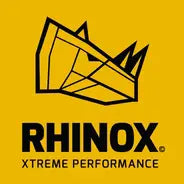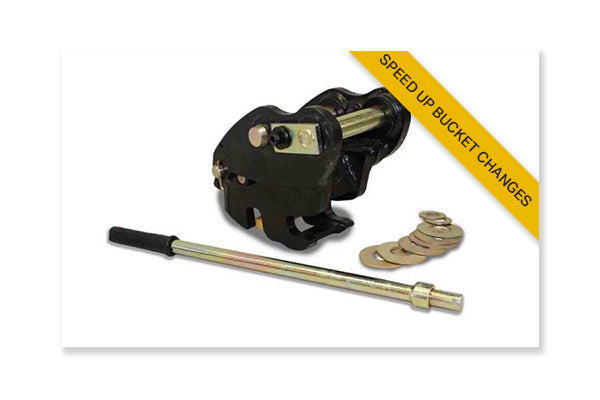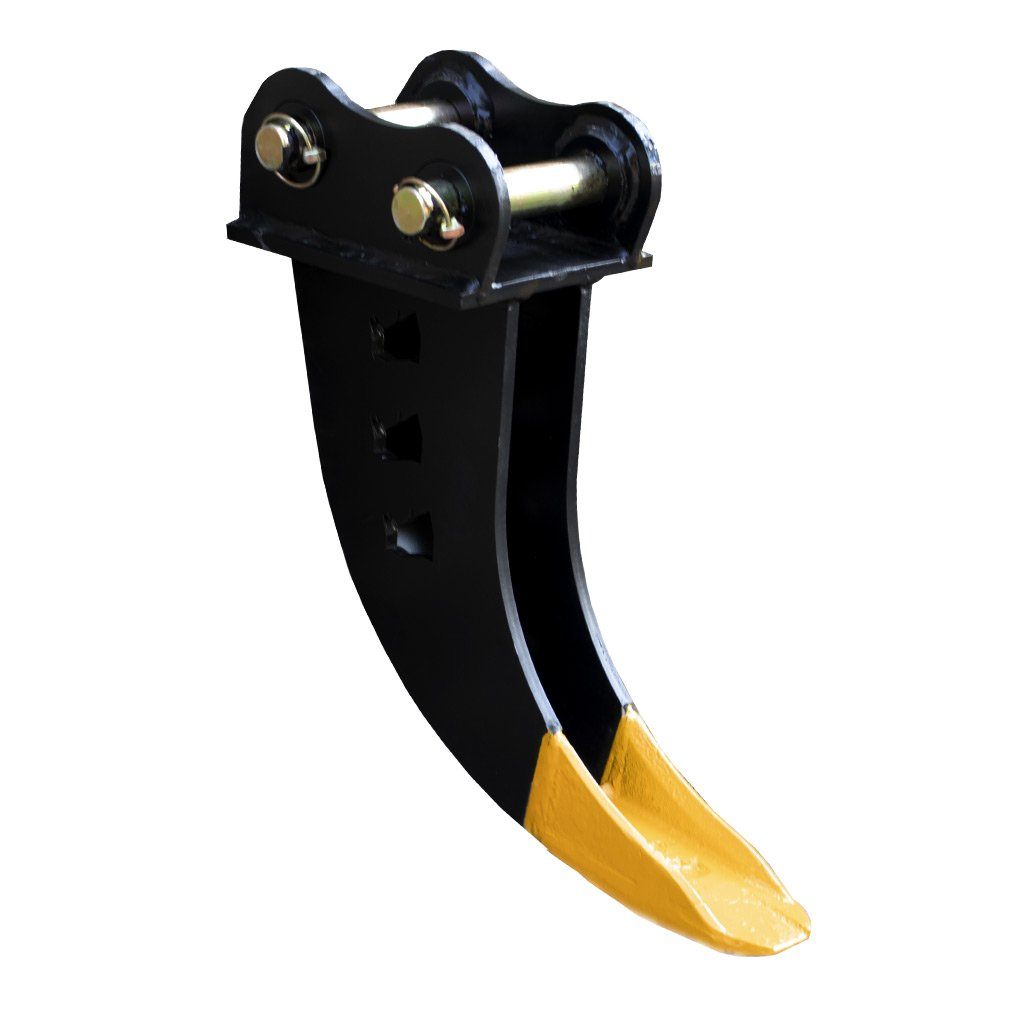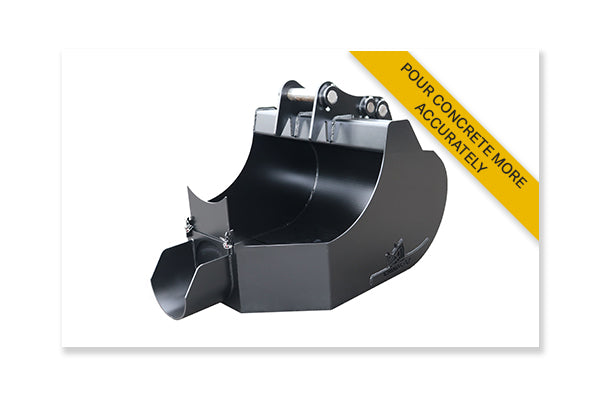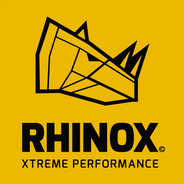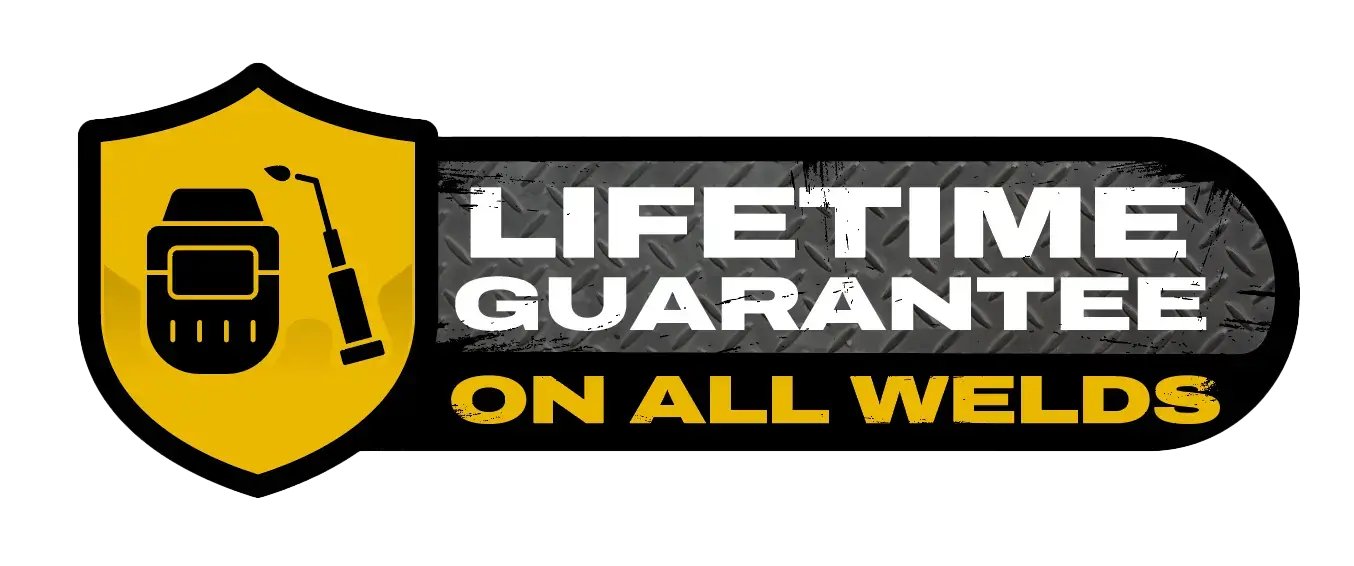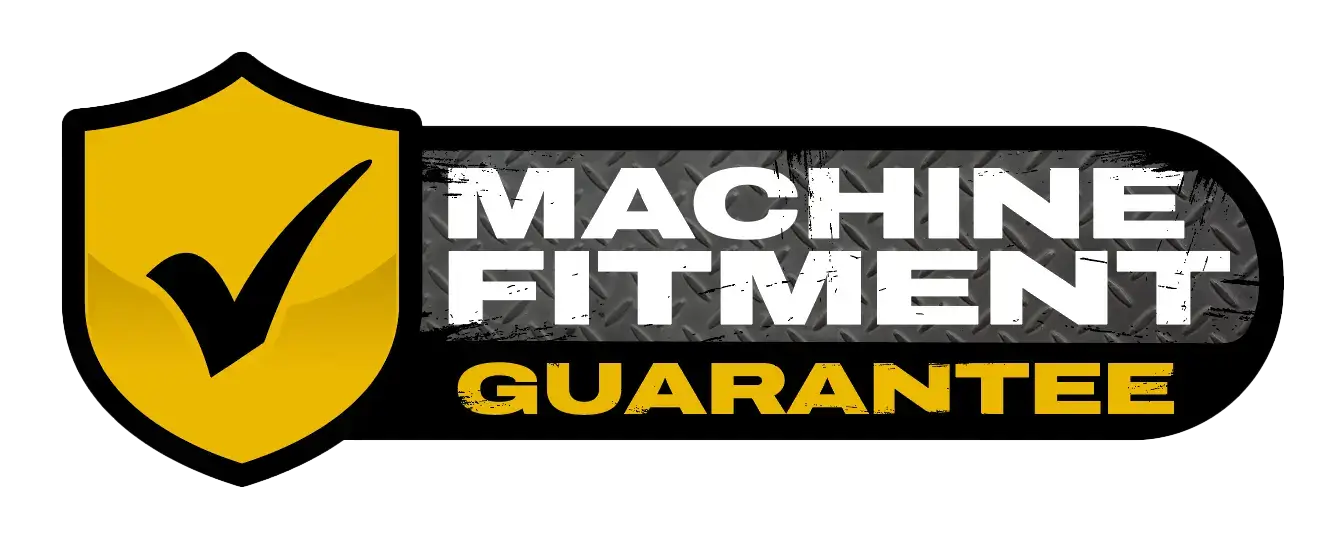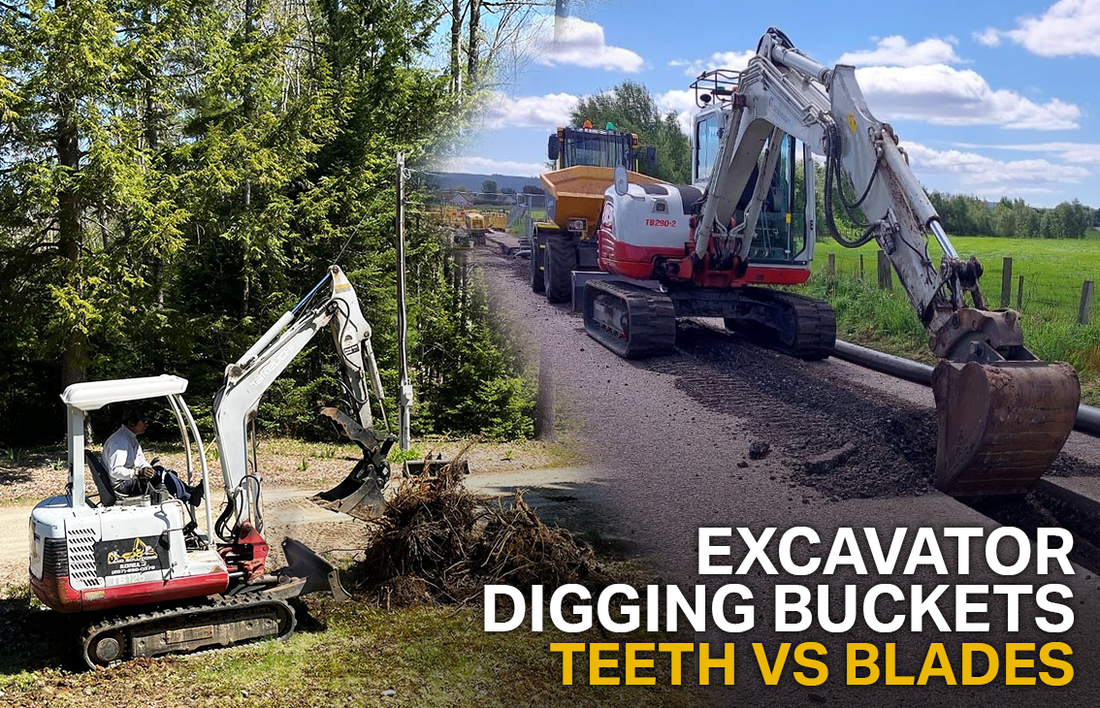
Excavator Digging Buckets - Teeth VS Blades
When it comes to choosing the right digging bucket for your mini digger or excavator, one of the most important decisions you'll make is whether to go with teeth or blade. Both options offer distinct advantages depending on the application, ground conditions and specific site requirements. While toothed buckets are often seen as the go-to for general digging and ground penetration, bladed buckets are becoming increasingly popular for their precision, clean finish and growing compliance with modern jobsite regulations. In this guide, we’ll explore the key differences between digging buckets with teeth and those with blades, highlight the best scenarios for each, and explore Rhinox's wide range of digging bucket edge options. Whether you're trenching, grading or working near sensitive underground utilities, understanding the pros and cons of each edge type will help you get the most out of your machine and protect your bucket investment in the long run.

Best Uses for Digging Buckets with Teeth
An excavator digging bucket fitted with teeth is one of the most common and widely used excavator attachments - and for good reason. Often referred to as a “bulking bucket,” toothed buckets are specifically designed for breaking up and penetrating compact materials like tough soil, clay and sedimentary rock. The serrated teeth focus the machine's power into narrow contact points, allowing for more efficient digging and greater force per impact. This makes them ideal for tasks such as trenching, digging flower beds or shaping dykes.
Beyond breaking ground, toothed buckets also excel in bulk material handling and removing embedded objects. The bucket teeth help scoop and grip materials more effectively, making it easier to lift out roots, rocks and debris. For particularly stubborn or deeply embedded obstacles, it’s often best to start with a ripper tooth attachment. An excavator ripper tooth channels the full force of your excavator into a single, concentrated point, making it perfect for loosening tough material. Once loosened, the digging bucket can then be used to clear and move the dislodged objects with ease.

Best Uses for Digging Buckets with a Blade
There are certain situations where using a toothed digging bucket isn’t ideal - and that’s where a bladed excavator bucket becomes the better choice. One of the most common reasons to opt for a toothless bucket is when you need to dig a trench with a clean, flat bottom. A bucket with a flat edge, such as a lip plate or a bolt-on blade, allows you to achieve a smooth, even finish without leaving behind tooth marks or grooves. As the digging bucket moves through the ground, the blade edge levels the surface, making it the go-to option for preparing trenches for pipe or cable installation.
Why are digging buckets with teeth banned on jobsites?
In many construction and utility environments, digger buckets with teeth are being phased out - particularly when working near existing underground services. Bladed buckets are preferred in these scenarios because the flat edge allows for controlled, shallow digging, helping reduce the risk of damaging buried utilities. When a toothless bucket is required, we strongly recommend fitting a bolt-on blade to protect your bucket’s lip plate from excessive wear. Edge options such as bolt-on blades or Uni-Tusk blades not only provide better wear resistance but also reinforce the bucket structure. Without a blade fitted, the lip plate will wear down over time, eventually compromising the welds that hold the shell and side plates together - potentially rendering the bucket unusable. That’s why even when working without teeth, it's essential to fit a blade to preserve both the performance and longevity of your digging bucket.
Bucket Edge Options on Excavator Digging Buckets
Choosing the right edge option for your excavator digging bucket can make a significant difference to both performance and durability on site. Whether you're operating a compact mini digger or a heavy-duty excavator, Rhinox offers a range of edge solutions designed to maximise digging efficiency, extend bucket life and suit a variety of ground conditions. Below, you'll find a breakdown of our available bucket edge options for different machine sizes.
Mini Digger Digging Bucket Edge Options - Up to 9 Ton
For mini diggers up to 9 ton, Rhinox offers a versatile range of bucket edge options to suit various digging tasks and ground conditions. Choose from traditional bolt-on teeth for effective penetration in compacted or rocky ground, or opt for a bolt-on blade to achieve a cleaner, smoother finish. For added protection and longevity, the bolt-on blade with side protectors provides reinforced durability on the bucket corners. Alternatively, the Uni-Tusk option offers an all-in-one solution combining cutting efficiency with wear resistance, making it a popular choice for harsh conditions.
|
|
 |

|
 |
 |
Package Type: |
Standard Teeth |
BladeX Standard |
BladeX Heavy Duty |
BladeX Extreme |
Includes: |
Bolt-on Teeth |
Bolt-on Blade |
Bolt-on Blade + Side Protectors |
Bolt-on Uni-Tusk |
Excavator Digging Bucket Edge Options - 9 Ton & Above
For larger excavators 9 ton and above, edge solutions are built to endure heavier workloads and tougher terrains. The CAT-style teeth offer powerful digging performance, making light work of hard or abrasive ground. When a cleaner cut or finish is required, the bolt-on blade provides a replaceable edge designed to protect the lip plate from wear. For permanent, heavy-duty performance, the weld-on blade is a robust option ideal for operators who demand long-lasting reliability in high-wear applications. Each of these options are engineered for maximum efficiency, reducing downtime and improving jobsite productivity.
|
|

|

|

|
Package Type: |
CAT-Style Teeth |
Bolt-on Blade |
Weld-on Blade |
Purchasing Rhinox Buckets
So, there you have it, the main differences between using a digging bucket with teeth verse with a blade, and why toothless buckets are becoming more widely seen on construction and utility sites. If you want to know more about our bladed bucket options and how to slow the wear on your buckets, check out some of our other content below. For more information or for help with placing an order, get in touch and we'll be happy to help. Shop our range of buckets and attachments online now.
